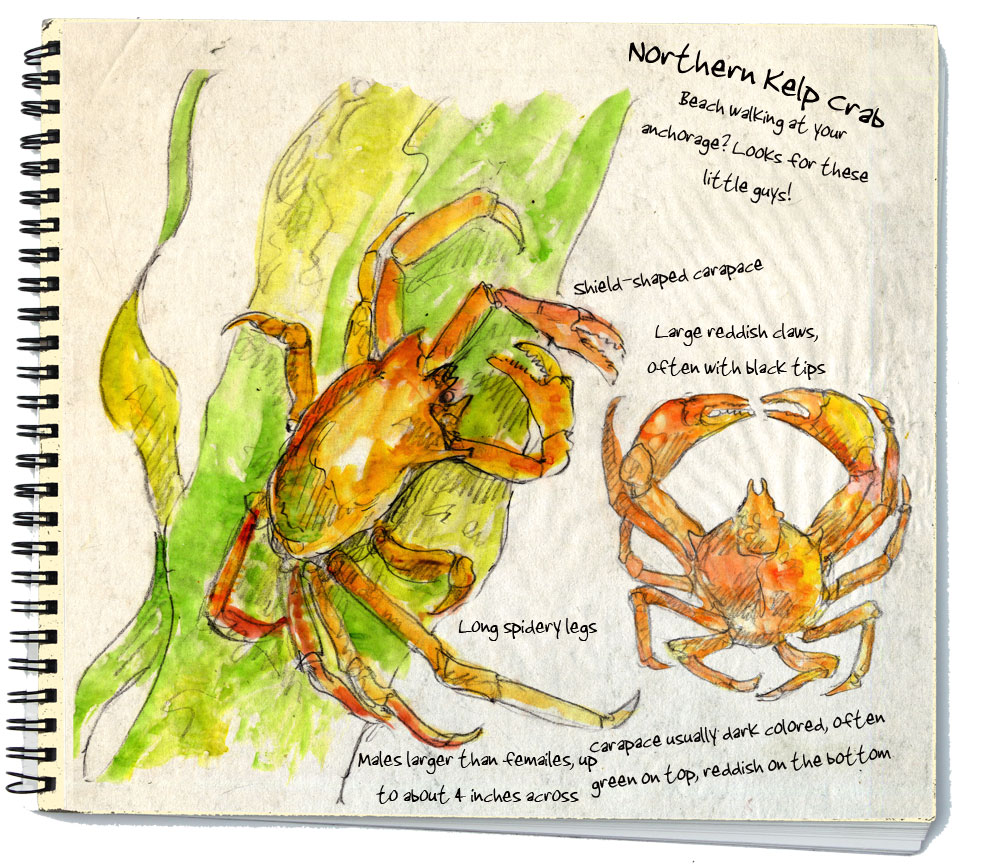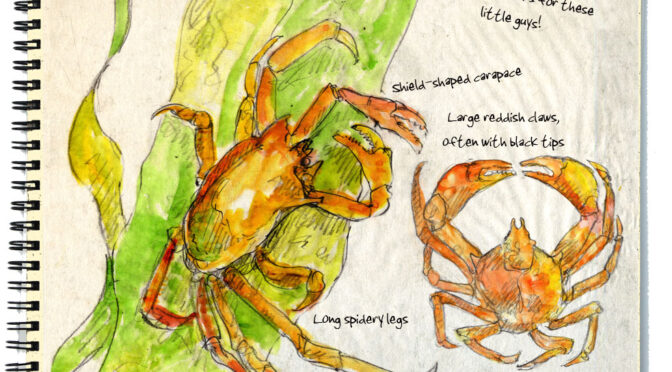
Walk the beach in your favorite anchorage and you’re likely to come across these little pointy-shelled crabs. Poke around in washed up kelp or around rocks at low tide, they’re easy to spot. Handle them carefully – nipper claws await your fingers. At four inches across, they’re not large compared to our Dungeness or red rock crabs, but I find these palm-sized crabs are interesting to watch as they scavenge their little worlds. In summer, kelp crabs are herbivores and will apparently eat anything, nipping bits of eel grass, algae and kelp. In winter, they turn to eating barnacles, small mussels and smaller creatures when eelgrass and kelp die away. It’s a change-up that is an ecologically advantage called diversity.
Kelp crabs look somewhat like spiders with their long and spindly legs, so it’s no surprise they belong to a group of crabs called spider crabs. These long legs aid in climbing aquatic plants, moving around with ease through eel grass and kelp beds. Females carry their eggs outside the shell, tucked tightly around the lower area in a sticky wad – reportedly as many as 84,000 of them! I’d imagine a dissertation-driven student counting all 84,000 to come up with that number, but it’s impressive for a four-inch creature. Heck, my mom lacked patience with just one. Females carry these bright-orange eggs through most of the year, but in summer they disappear, probably moving to deep water with less current where they hatch into tiny larvae and swim free as they grow into adults.
Larry Eifert paints and writes about wild places. His work is in many national parks across America – and at larryeifert.com.
